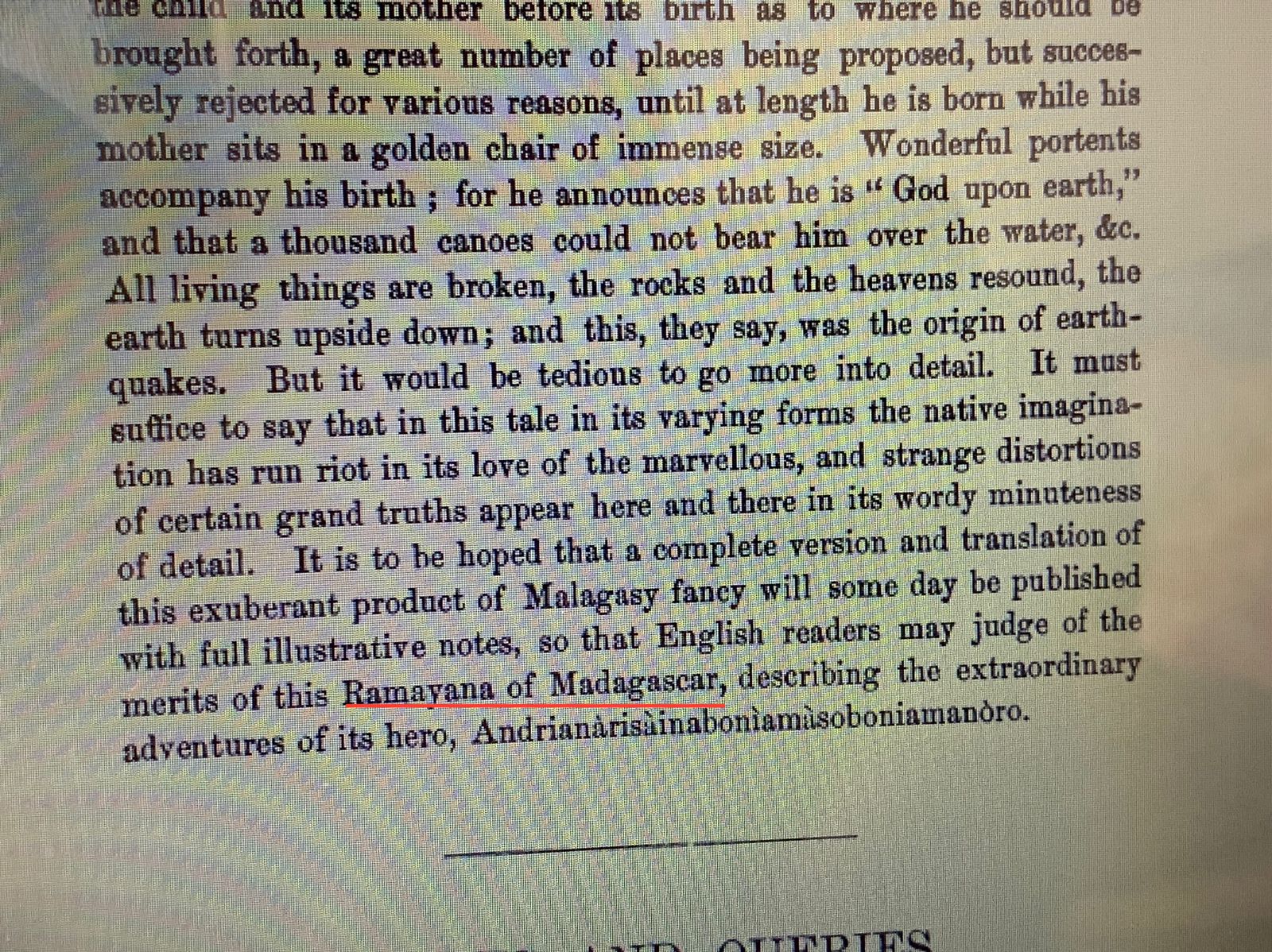
Ramayana carvings on a wall in Bali, Indonesia
Research is needed to find further similarities between Ibonia and Ramayana
 Antananarivo: The Malagasy epic, Ibonia, resembles the Indian epic, Ramayana, in its grand plot, that is abduction of Ibonia’s betrothed wife Rampela by Ravato, like the abduction of Rama’s wife Sita by Ravana, and the fight of Ibonia to get his wife Rampela back from Ravato like Rama’s fight to get back Sita from Ravana.
Antananarivo: The Malagasy epic, Ibonia, resembles the Indian epic, Ramayana, in its grand plot, that is abduction of Ibonia’s betrothed wife Rampela by Ravato, like the abduction of Rama’s wife Sita by Ravana, and the fight of Ibonia to get his wife Rampela back from Ravato like Rama’s fight to get back Sita from Ravana.
Since Ramayana is popular in South East Asian countries, particularly in Indonesia, where it is still played and performed, it was believed that Madagascar should have its own version of Ramayana as the origin of the Merina people of Madagascar is traced to Indonesia.
Ibonia is an epic poem of Madagascar dating back centuries which tells the tale of conception, birth, betrothal, struggle and death of its hero Ibonia (Iboniamasiboniamanoro or “he of the clear and captivating glance”).
The tale begins with the conception of Ibonia by his mother with the help of divine intervention. Ibonia starts talking while still in his mother’s womb and wishes to be betrothed to the Joy-Giving girl (Rampelasbamananbro), which is fulfilled. When they grow up and can get married to each other, the Joy-Giving girl is abducted by the Trouble-Stone man (Ravatovblovoay). Ibonia prepares for a fight with the Trouble-Stone man and seeks advice from the Great Echo and others. Ibonia’s parents are worried about their son and try to dissuade him offering him many suitable candidates for him to choose as a wife, however Ibonia rejects them all. Then they ask him to show his strength fighting various creatures before letting him go to fight the Trouble-Stone man.

Ibonia disguises himself as an old man to gain the trust of the Trouble-Stone man. He entertains him playing the valiha (a traditional bamboo tube zither) and fanorona (a traditional game played with stones on a board) and as soon as he gets an opportunity, Ibonia escapes with Joy-Giving Girl from the Trouble-Stone man. They are chased by the Trouble-Stone man and his men. Ibonia fights and kills them. Ibonia and the Joy-Giving girl get married and live happily until Ibonia’s peaceful death.
Ibonia is an epic poem transmitted orally from generation to generation in Madagascar through the centuries. It occupies a notable place in Malagasy cultural recitations and oral tradition. There are different versions according to ethnic groups and regions.
Several written transcripts have been made since the 17th century, the first in 1657, the following from the 19th century, first around 1830 then around 1870 and several in the 1880s. The 1870 version is widely distributed.
Other versions have been collected and analyzed in the twentieth and twenty-first centuries and the latest unpublished version was discovered on the island of Mayotte in 2008. More research is needed to find further similarities between these two great epics of Ibonia and Ramayana.
– global bihari bureau





